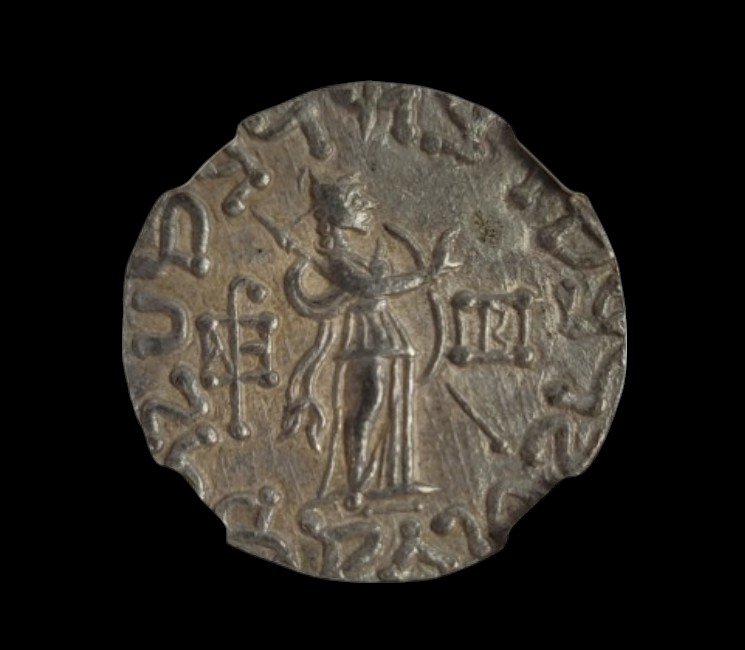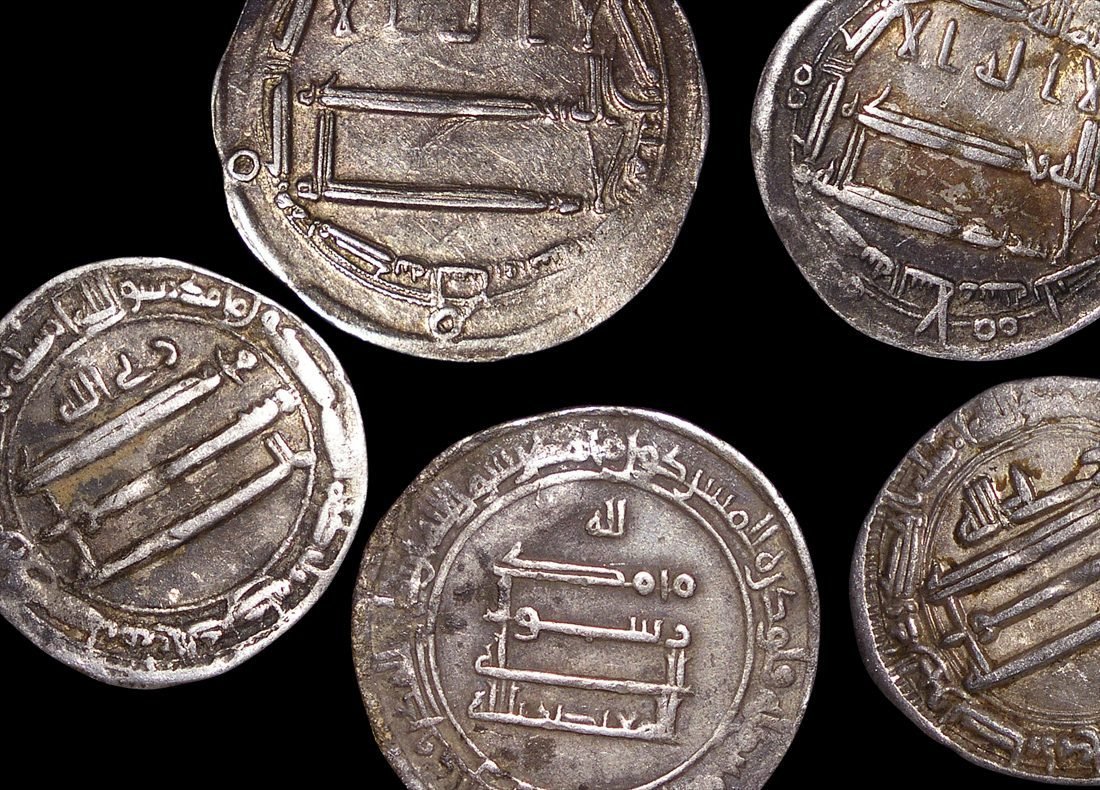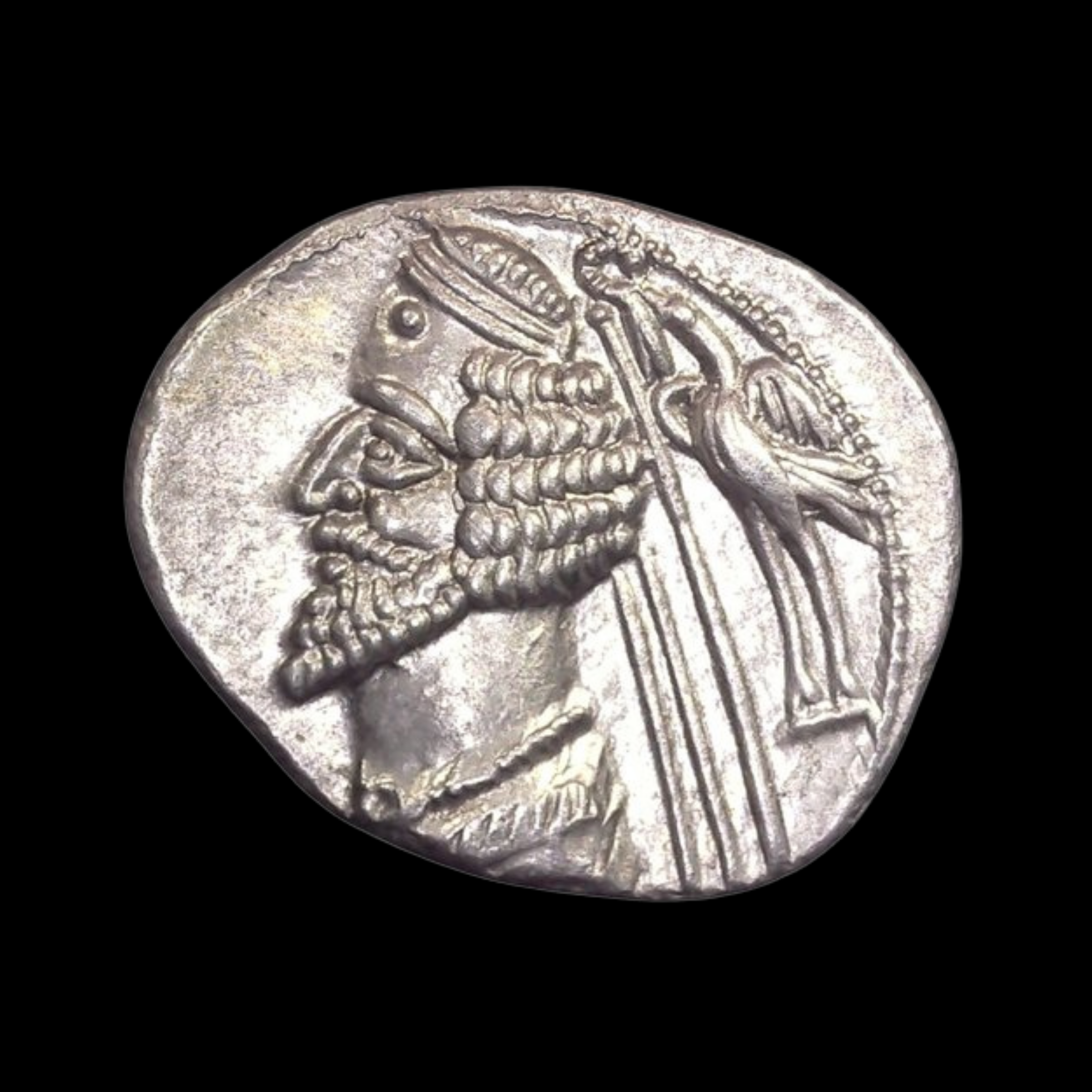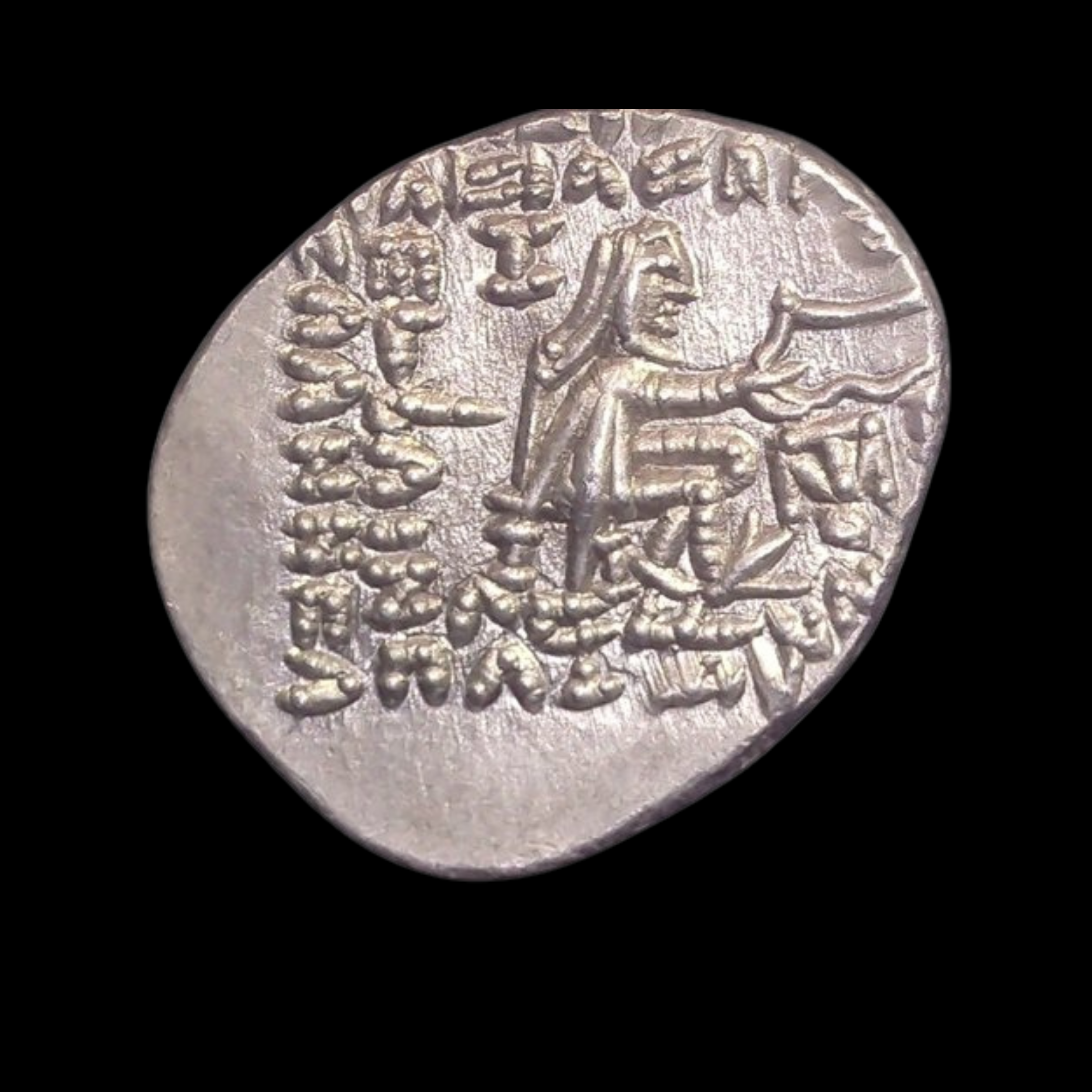Indo-Scythian Silver Coin of King Azes II (about 2,020-2,060 years ago)
This remarkably preserved silver tetradrachm represents the Indo-Scythian Kingdom under King Azes II, who ruled territories in what is now Afghanistan and Pakistan during the time of Christ's birth. With its bilingual inscriptions and cultural fusion of Greek and Indian elements, this coin exemplifies the fascinating multicultural kingdoms that emerged in Central Asia following Alexander the Great's conquests, potentially connecting to biblical narratives through the legendary "Journey of the Magi."
Coin Description:
Front side: King Azes II on horseback, wearing Central Asian or Scythian attire, with Greek inscription giving his name and titles
Back side: Standing figure of Zeus (Greek king of gods) holding scepter, with inscription in Kharoshthi script (an ancient Indian writing system)
Technical Details:
Silver composition
Denomination: Tetradrachm (a substantial silver coin)
NGC certified
Minted approximately 35 BC - 5 AD
Weight: Typically around 9.5 grams
Condition as certified by NGC
Historical Significance: This coin connects to multiple fascinating historical narratives. King Azes II ruled a powerful Indo-Scythian kingdom during a crucial period when trade routes like the Silk Road facilitated cultural exchange between East and West. The coin's bilingual nature—Greek on one side, Indian script on the other—reflects the remarkable cultural fusion in these frontier kingdoms. Some scholars speculate that the biblical "Magi" who followed a star to Bethlehem may have been Zoroastrian priests or astronomers from this very region, potentially sent as representatives of King Azes. This connection between biblical narrative and archaeological evidence makes these coins particularly intriguing to both historians and collectors interested in the interconnected nature of ancient civilizations during this pivotal period when Christianity was emerging.
This remarkably preserved silver tetradrachm represents the Indo-Scythian Kingdom under King Azes II, who ruled territories in what is now Afghanistan and Pakistan during the time of Christ's birth. With its bilingual inscriptions and cultural fusion of Greek and Indian elements, this coin exemplifies the fascinating multicultural kingdoms that emerged in Central Asia following Alexander the Great's conquests, potentially connecting to biblical narratives through the legendary "Journey of the Magi."
Coin Description:
Front side: King Azes II on horseback, wearing Central Asian or Scythian attire, with Greek inscription giving his name and titles
Back side: Standing figure of Zeus (Greek king of gods) holding scepter, with inscription in Kharoshthi script (an ancient Indian writing system)
Technical Details:
Silver composition
Denomination: Tetradrachm (a substantial silver coin)
NGC certified
Minted approximately 35 BC - 5 AD
Weight: Typically around 9.5 grams
Condition as certified by NGC
Historical Significance: This coin connects to multiple fascinating historical narratives. King Azes II ruled a powerful Indo-Scythian kingdom during a crucial period when trade routes like the Silk Road facilitated cultural exchange between East and West. The coin's bilingual nature—Greek on one side, Indian script on the other—reflects the remarkable cultural fusion in these frontier kingdoms. Some scholars speculate that the biblical "Magi" who followed a star to Bethlehem may have been Zoroastrian priests or astronomers from this very region, potentially sent as representatives of King Azes. This connection between biblical narrative and archaeological evidence makes these coins particularly intriguing to both historians and collectors interested in the interconnected nature of ancient civilizations during this pivotal period when Christianity was emerging.
This remarkably preserved silver tetradrachm represents the Indo-Scythian Kingdom under King Azes II, who ruled territories in what is now Afghanistan and Pakistan during the time of Christ's birth. With its bilingual inscriptions and cultural fusion of Greek and Indian elements, this coin exemplifies the fascinating multicultural kingdoms that emerged in Central Asia following Alexander the Great's conquests, potentially connecting to biblical narratives through the legendary "Journey of the Magi."
Coin Description:
Front side: King Azes II on horseback, wearing Central Asian or Scythian attire, with Greek inscription giving his name and titles
Back side: Standing figure of Zeus (Greek king of gods) holding scepter, with inscription in Kharoshthi script (an ancient Indian writing system)
Technical Details:
Silver composition
Denomination: Tetradrachm (a substantial silver coin)
NGC certified
Minted approximately 35 BC - 5 AD
Weight: Typically around 9.5 grams
Condition as certified by NGC
Historical Significance: This coin connects to multiple fascinating historical narratives. King Azes II ruled a powerful Indo-Scythian kingdom during a crucial period when trade routes like the Silk Road facilitated cultural exchange between East and West. The coin's bilingual nature—Greek on one side, Indian script on the other—reflects the remarkable cultural fusion in these frontier kingdoms. Some scholars speculate that the biblical "Magi" who followed a star to Bethlehem may have been Zoroastrian priests or astronomers from this very region, potentially sent as representatives of King Azes. This connection between biblical narrative and archaeological evidence makes these coins particularly intriguing to both historians and collectors interested in the interconnected nature of ancient civilizations during this pivotal period when Christianity was emerging.










